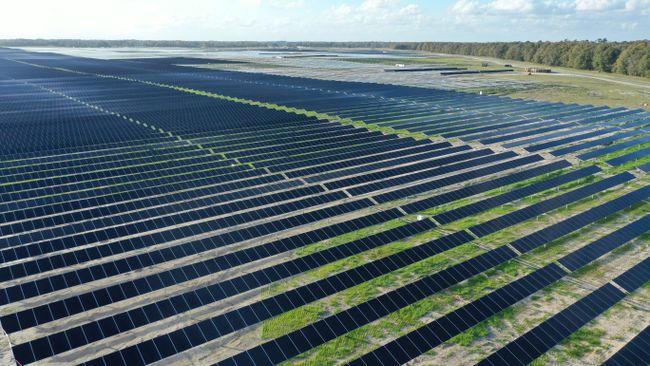
State utility regulators on Tuesday backed plans by Duke Energy Florida to build 10 solar plants over the next four years, despite some concerns about size and costs.
In a 4-1 vote, the Public Service Commission supported Duke Energy’s “Clean Energy Connection Program” that will allow customers to voluntarily pay more on their electric bills to help finance the solar projects. Customers will receive credits that will result in them getting a “payback” in about seven years.
“To the general body of ratepayers there’s a significant amount of funds that are going to be coming back to them over a long period of time. There’s going to be substantial benefits from the renewable energy perspective,” Commission Chairman Gary Clark said. “And, again, I’ve weighed this thing out. I’m really, really back and forth on the issue. But I do believe that it does meet the public-interest test.”
But Commissioner Julie Brown, who voted against the 750-megawatt project, questioned its cost efficiency. She pointed to a $1.8 billion plan by Florida Power & Light, approved by the regulators in March, that will see construction of 20 solar-power plants and establish 1,490 megawatts of solar capacity.
“Looking at the two projects, in terms of scale and the projected costs, the Duke project is half the size of the FPL solar, but costs almost exactly as much,” Brown said.
The Duke plan “in essence has some great characteristics, notably the third-party projects that they would be encouraging as well, and some of the benefits,” Brown added.
“But I think the scale of this project is too big to support it as cost effective,” she said.
Under Duke’s plan, some customers will voluntarily pay more upfront on their bills to help finance the projects and then receive future bill credits. The utility argues that the program would benefit all of its customers because the solar projects would ultimately reduce the need to build costly natural-gas plants and would help reduce carbon emissions.
The Duke project involves building 10 74.9-megawatt solar plants, with two coming online in January 2022, four coming online in January 2023 and four coming online in January 2024, according to Duke’s proposal filed at the Public Service Commission in July. The costs of each plant would range from $102 million to $113 million.
The Earthjustice legal group, which represented the League of United Latin American Citizens of Florida in opposing the plan, maintains the Duke program will bring costs and financial risks for the vast majority of Duke customers that don’t participate.
“This program is not what it seems and it will send millions of dollars to large corporations — like Walmart — at the expense of ordinary customers. Large-scale solar is good, but doing it like this — in a way that’s not equitable for all utility customers — is a bad precedent,” Earthjustice attorney Bradley Marshall said in a prepared statement following Tuesday’s vote. “Under Duke’s program, all utility customers pay not only for the solar, but then also pay almost $300 million to just a few of Duke’s customers, the majority of which will go to corporations and other wealthier users.”
Duke’s plan will allow residential and small business customers to subscribe to blocks of solar power at $8.35 per kilowatt block. Those customers would draw a monthly credit based on their subscription size and the actual solar energy produced. The credit is expected to start at 4.037 cents per kilowatt-hour, going up 1.5 percent a year after 36 months.
Duke’s approximately 1.8 million residential customers monthly pay an average of $126.63 per 1,000 kilowatt hours.
The solar program includes set asides for low-income customers in government subsidy programs or the company’s low-income energy efficiency program, and for local governments, according to the commission.
Duke, FPL and other utilities have looked in recent years to dramatically increase their use of solar energy, as facilities have become more cost-effective and amid pressures to reduce carbon emissions. As an example, the Public Service Commission in November approved a solar project in Polk County that will be the fourth phase of a plan by Tampa Electric Co. to add such facilities.
But Duke’s Clean Energy Connection program and FPL’s SolarTogether program differ from the others because of the way they are structured. Duke, like FPL, argues that the structure will lead to long-term savings for all customers because of reduced need for natural-gas plants and related costs, such as fuel.
_____
Republished with permission from The News Service of Florida.



